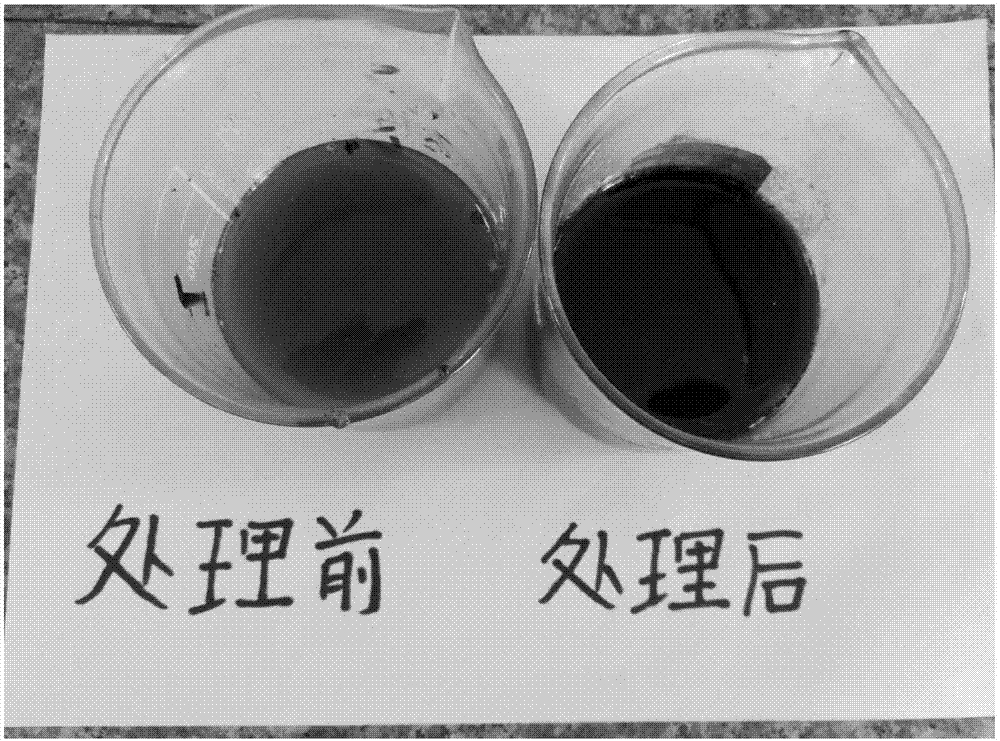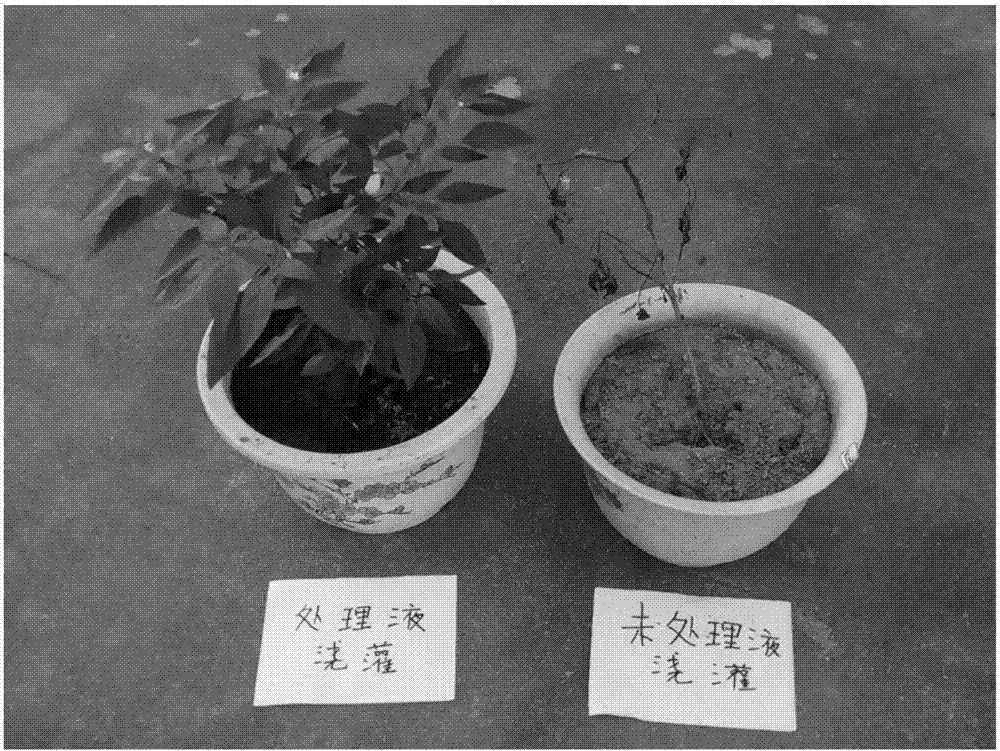Method for treating fermentation waste liquid of marigold flowers
A technology of fermentation waste liquid and treatment method, which is applied to fertilizers, applications, and organic fertilizers made of biological waste, and can solve problems such as crop death, large sewage treatment costs, and complex components.
- Summary
- Abstract
- Description
- Claims
- Application Information
AI Technical Summary
Problems solved by technology
Method used
Image
Examples
Embodiment 1
[0022] like figure 2 As shown, the treatment method of marigold flower fermentation waste liquid:
[0023] (1) take by weighing each component on the basis of the weight of the marigold flower fermentation waste liquid to be treated: 100t marigold flower fermentation waste liquid (water content 95.0%, water-soluble organic matter content is 3.0%, pH=4.0), take by weighing 0.2t organic carbon bacteria liquid, 0.5t potassium hydroxide and 0.002t Bacillus coagulans inoculum;
[0024] (2) above-mentioned marigold flower fermentation waste liquid, organic carbon bacteria liquid, potassium hydroxide and bacillus coagulans inoculum are mixed to obtain mixed solution;
[0025] (3) under the condition of room temperature, in the above-mentioned mixed solution, uniformly and continuously pass into the air with the ventilation rate of 0.030L / L*min and stop the ventilation after 8d treatment to obtain the treated liquid;
[0026] (4) liquid is carried out solid-liquid separation with a...
Embodiment 2
[0029] like figure 2 As shown, the treatment method of marigold flower fermentation waste liquid:
[0030] (1) take by weighing each component on the basis of the weight of the marigold flower fermentation waste liquid to be treated: 100t marigold flower fermentation waste liquid (water content 97.0%, water-soluble organic matter content is 1.5%, pH=5.0), take by weighing 0.15t organic carbon bacteria liquid, 0.4t potassium hydroxide and 0.002t Bacillus coagulans inoculum;
[0031] (2) above-mentioned marigold flower fermentation waste liquid, organic carbon bacteria liquid, potassium hydroxide and bacillus coagulans inoculum are mixed to obtain mixed solution;
[0032] (3) under room temperature conditions, in the above-mentioned mixed solution, uniformly and continuously pass into the air with the ventilation rate of 0.025L / L*min and stop the ventilation after 7d treatment to obtain the treated liquid;
[0033] (4) liquid is carried out solid-liquid separation with above-...
Embodiment 3
[0036] like figure 2 As shown, the treatment method of marigold flower fermentation waste liquid:
[0037] (1) take by weighing each component on the basis of the weight of the marigold flower fermentation waste liquid to be treated: 100t marigold flower fermentation waste liquid (water content 99.0%, water-soluble organic matter content is 1.0%, pH=6.0), take by weighing 0.1t organic carbon bacteria liquid, 0.3t potassium hydroxide and 0.002t Bacillus coagulans inoculum;
[0038] (2) above-mentioned marigold flower fermentation waste liquid, organic carbon bacteria liquid, potassium hydroxide and bacillus coagulans inoculum are mixed to obtain mixed solution;
[0039] (3) under the condition of room temperature, in the above-mentioned mixed solution, uniformly and continuously pass into the air with the ventilation rate of 0.020L / L*min and stop the ventilation after 6d treatment to obtain the treated liquid;
[0040] (4) liquid is carried out solid-liquid separation with a...
PUM
 Login to View More
Login to View More Abstract
Description
Claims
Application Information
 Login to View More
Login to View More - R&D
- Intellectual Property
- Life Sciences
- Materials
- Tech Scout
- Unparalleled Data Quality
- Higher Quality Content
- 60% Fewer Hallucinations
Browse by: Latest US Patents, China's latest patents, Technical Efficacy Thesaurus, Application Domain, Technology Topic, Popular Technical Reports.
© 2025 PatSnap. All rights reserved.Legal|Privacy policy|Modern Slavery Act Transparency Statement|Sitemap|About US| Contact US: help@patsnap.com



